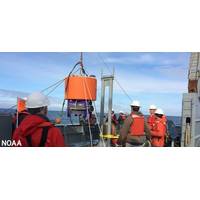
NOAA Awards $41 Million for Ocean Observing
Coastal Ocean Observing System will continue to address coastal hazards, water quality, maritime commerce & safety, fisheries and natural resources, and energy including the rapidly changing offshore wind sector. (First year award: $4,984,041)•Northwest Association of Networked Ocean Observing Systems will continue investment in observing and modeling in the coastal ocean, estuaries, and shorelines of Oregon and Washington, providing real-time information and integrated data products to support known and emerging stakeholder needs. (First year award: $3,932,271)•The Northeastern
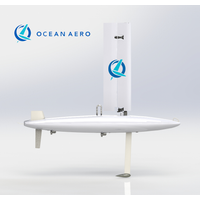
NOAA Awards $1 Mln to Enhance, Operate ASV for Remote Sampling
As part of the NOAA-led Integrated Ocean Observing System (IOOS) Ocean Technology Transition (OTT) program, the University of Washington, Oregon State University, Ocean Aero, the Northwest Association of Networked Ocean Observing Systems (NANOOS), and NOAA Northwest Fisheries Science Center partners will receive $1 million in funding over the next three years to enhance and deploy Ocean Aero’s Triton Class autonomous surface vehicle (ASV) to augment HAB sampling at remote offshore locations on the Oregon and Washington coasts.“Harmful Algal Blooms can cause severe environmental, economic

Kritzer Joins NERACOOS as Executive Director
The Northeastern Regional Association of Coastal Ocean Observing Systems (NERACOOS) announced the appointment of Dr. Jake Kritzer as the organization’s new Executive Director.Dr. Kritzer is taking over from Dr. John Ruaridh “Ru” Morrison, the founding Director and leader of NERACOOS for the past 10 years, who retired from the position in late 2019.NERACOOS, a 501(c)3 non-profit, ensures safety, economic vitality and environmental resilience by producing, integrating, and communicating high-quality ocean information on their open-access website.The NERACOOS hiring committee felt that
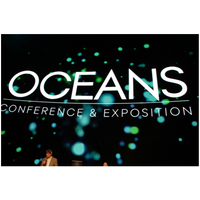
Industry Event OCEANS 2019 Seattle A Success
gathered a small fleet of research vessels at Seattle’s waterfront marina for tours on Monday . . . a classic fall day with bright blue skies and cool, crisp air. Some of the popular features of the conference continued, including the Office of Naval Research and Integrated Ocean Observing Systems sponsored Student Poster Competition (see article elsewhere in this edition), several special Town Halls on key topics such as marine debris and plastics, and a Gala reception at an iconic location – the Frank Gehry-designed Museum of Popular Culture (MoPOP) at The Seattle Center.The
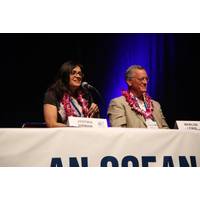
OceanObs’19: Innovation Expanding Ocean Observations
spend years following their favorite bands, others attend conventions for science fiction shows. But once a decade those dedicated to sustained ocean observing gather. The OceanObs conferences are held once every ten years to focus the attention of those planning, implementing, and applying ocean observing systems. Each conference allows this diverse group to review the state of science and operations, and to define goals for the next decade. The decadal conferences are an occasion to celebrate the accomplishments and vision of global ocean observers.300 attendees gathered for The First International

#Oi2020 History
The era of the “new millennium” made its way within subsea research and development when in 2000, Congress tapped the U.S. Commission on Ocean Policy to “investigate and provide recommendations for a ‘coordinated and comprehensive ocean policy’,” according to Advances in Marine Technology (as published by the Marine Technology Society). Following the seven-year investigation and research process, as well as input and public discussion, the commission presented An Ocean Blueprint for the 21st Century, (which according to MTS) included more than 200 recommendations.
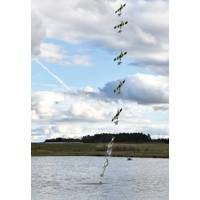
Drones for Coastal Enviro Management
making increasing impacts in the maritime domain. As the capabilities of these platforms have increased, so have their contributions to maritime science, defense, and industry. Recognizing this, the Alliance for Coastal Technologies (ACT) and the Northeastern Regional Association of Coastal and Ocean Observing Systems (NERACOOS), with support from the U.S. Integrated Ocean Observing System (IOOS), convened a workshop on Practical Uses for Drones to Address Management Problems in Coastal Zones at the Wells National Estuarine Research Reserve (WNERR) in Wells, Maine, in late 2018. The workshop was designed
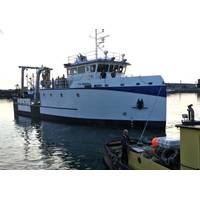
New Research Vessel for Virginia Institute of Marine Science
in science outfitting allowing for high utilization and affordable operating day rates. The vessel is easily adaptable to evolving scientific research areas such as offshore oil and gas exploration surveys, wind energy development surveys, environmental impact studies, and the servicing of ocean observing systems.Main propulsion is provided by a pair of 660 BHP tier III Cummins QSK 19M engines coupled to a Finnoy 2G27-42FK two–in/one-out marine gear driving a Finnoy 5 blade, 1.95 meter diameter controllable pitch propeller. The propeller turns inside of a Rice thrust nozzle with triple rice
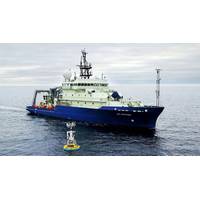
NSF Awards Contract to Continue Ocean Observatories Initiative
role to ensure that the initiative continues to serve both the science community and the public,” said WHOI President and Director Mark Abbott. “We look forward to continuing to work with NSF and our partners toward the success of the initiative as part of a growing global network of ocean observing systems.”The Project Management Office, which is a new addition to WHOI’s role in the overall operation of the OOI, will report directly to NSF and will provide high-level oversight and financial management of the project. In addition, the office will coordinate with partner institutions

 December 2025
December 2025





